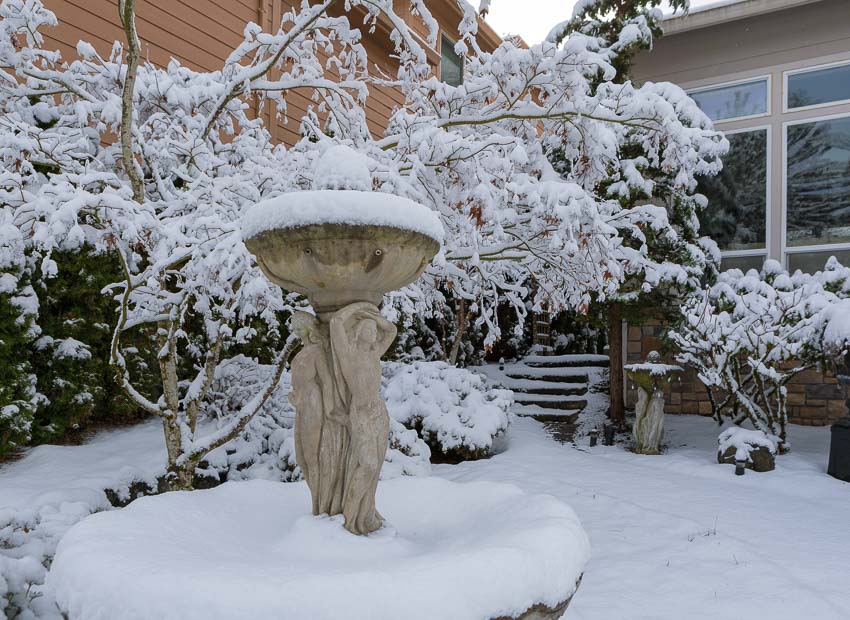Stretching from Northern California to Oregon, Washington, and Idaho, the Pacific Northwest is a diverse and dynamic region. Learn more about exciting opportunities for winter gardening in the Pacific Northwest.
What is Winter Gardening in the Pacific Northwest Like?
The Pacific Northwest has a temperate maritime climate with mild, wet winters and relatively cool summers. However, the weather in this region covers the entire spectrum.
Pacific Northwest Climate and Hardiness Zones
The Pacific Northwest (PNW) includes USDA Hardiness Zones 6 through 9, so there’s a wide range of growing conditions in the coastal, mountainous, and inland regions.
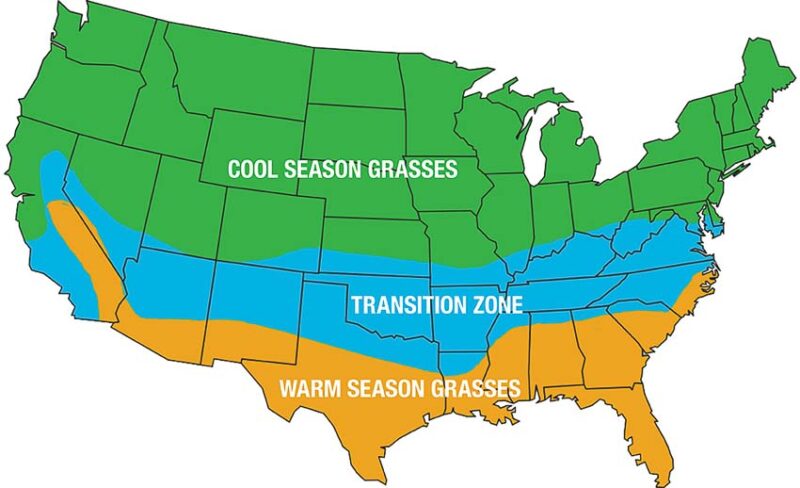
Wet, moderating effects of the Pacific Ocean influence coastal areas, typically boasting mild, wet winters. In contrast, mountainous zones and inland areas have cooler temperatures with heavier snowfall, especially at higher elevations.
Winter Gardening in the Pacific Northwest
Many gardeners in the Pacific Northwest use protective measures, like row covers, cold frames, and greenhouses, to extend their growing season. Your growing zone, local weather patterns, and regional climate will dictate your gardening activities in this area, especially in the winter.
Throughout the year, gardening in the PNW presents challenges and surprises, but with proper planning and attention to the region’s unique characteristics, gardeners can grow productive year-round gardens.
Benefits of Winter Gardening in the Pacific Northwest
Depending on your latitude and elevation, you’ll only have about 150 to 200 frost-free gardening days in many parts of the Pacific Northwest. Winter gardening extends the growing season, allowing you to grow plants all year.
Year-Round Beauty and Aesthetic Appeal
There are a variety of tactics to extend your growing season and enjoy a beautiful garden year-round. Admittedly, this is a little harder to do in Zone 6 than in Zone 9, but designing a visually appealing winter garden isn’t out of the question.
Here are some ideas to incorporate year-round beauty:
- Use evergreen trees to provide structure and form for your design.
- Plant trees and shrubs with textured bark and colorful berries for interest.
- Use ornamental grasses to add elegance to your winter garden.
- Use groundcovers with colorful foliage to add vibrant hues to your winter landscape.
Sustainable and Local Produce
There are many opportunities for growing produce during a PNW winter, as long as you carefully select the right outdoor plants and techniques.
Use row covers or cold frames to grow hardy winter vegetables like kale and chard for fresh greens all winter. If you plant a fall garden with carrots and beets, you can cover it with thick straw mulch after the first frost and enjoy fresh root vegetables all winter.
Extended Growing Season and Homegrown Freshness
Even without a greenhouse, you can extend your growing season from start to finish by starting plants indoors in the spring and bringing plants inside in the fall.
Start seedlings in late winter and set them out in cold frames once they get big enough. In the fall, bring potted plants like tomatoes and herbs indoors or cover them at night to protect them from frost.
What Can Grow in the Winter in the Pacific Northwest?
What you can grow in the winter in the Pacific Northwest depends on which Hardiness Zone you live in. Other factors, like regional weather patterns and microclimates, also help determine what will grow in your area.
From winter vegetables to cover crops, here are some common crops you can grow in the Pacific Northwest during winter.
Winter Vegetables
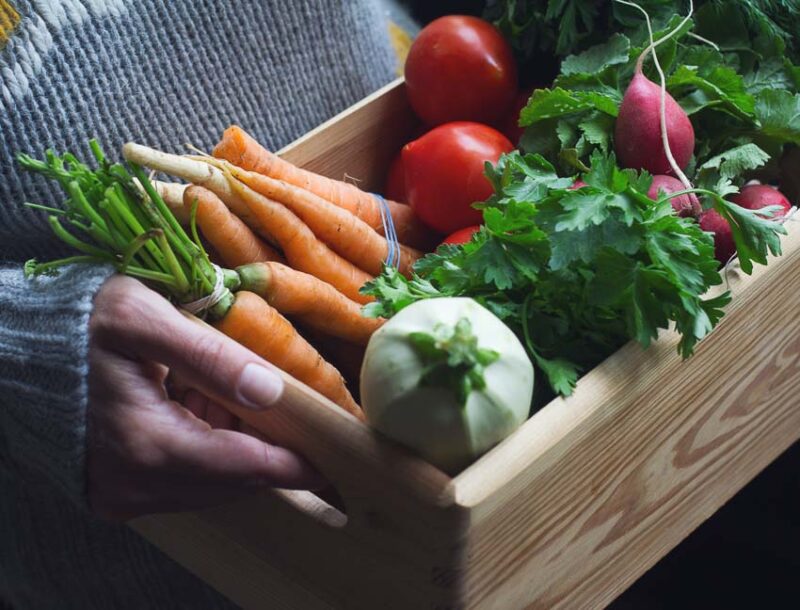
Some cold-hardy garden plants live through the winter in the region’s mildest climates. Here are the best vegetables to grow in the area over winter:
- Kale
- Broccoli
- Cabbage
- Radish
- Leeks
- Beets
- Carrots
- Turnips
- Kohlrabi
- Bok choy
Overwintering Perennials and Herbs
Most perennials go dormant in the winter, but some don’t need to if the temperatures are mild enough.
You can grow herbs in the winter as container plants. Or plant them strategically in protected areas outdoors and use them all winter.
Garlic
The Pacific Northwest is a great place to grow garlic. Plant garlic in the fall, then enjoy the harvest in mid-summer. Once you harvest your garlic in July, you can prepare the area for a fall garden crop.
Cover Crops
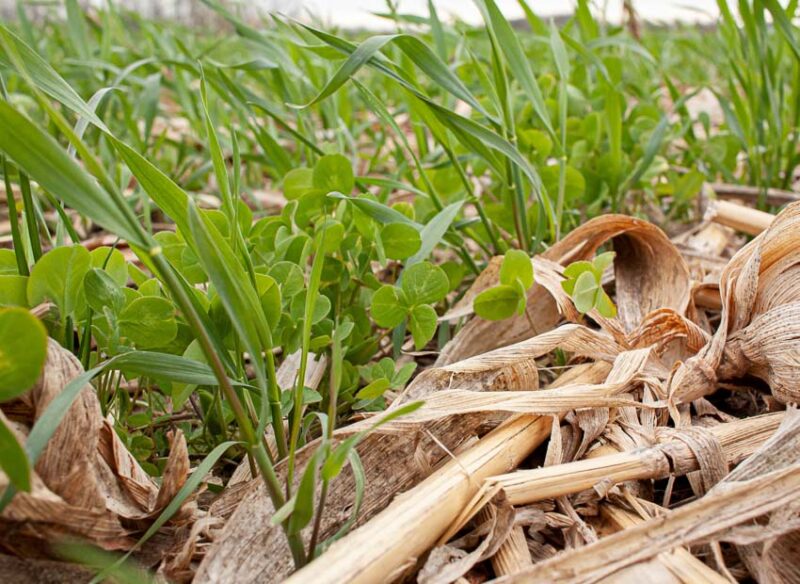
Cover crops include grains and legumes, like winter rye, buckwheat, clover, and hairy vetch. Winter crops for Oregon, Washington, and Idaho serve various purposes. Here are the most common reasons to grow cover crops:
- Add nitrogen to your soil
- Improve the soil structure
- Increase biomass and add organic matter
- Stop soil erosion
With planning, you can ensure that your ground always has something growing on it.
When to Start Winter Gardening in the Pacific Northwest
The timing for winter gardening in the Pacific Northwest varies depending on your growing zone. Adjust the timing by moving it back if you’re in Zone 9. Move it up if you’re in a colder region.
Spring Cover Crop
Vegetable gardening in the Pacific Northwest requires planning, sometimes months or years in advance.
Your winter vegetable garden should begin with a spring cover crop. The best spring cover crops include popular choices like field peas or oats.
Late Summer to Early Fall
Plan to terminate your cover crops about 6 weeks before planting your fall and winter garden. You can either till the cover crop or lop it off for no-till gardening. Then, cover the area with mulch or landscape fabric and let it sit until it’s time to plant.
Whether or not you use a cover crop, you can start planting vegetables to grow in the winter, starting in August and September.
Choose cold-hardy vegetables with short maturation periods, and base your planting dates on the days to maturity. Radishes only take 30 days to mature, while broccoli matures in 50 to 60 days. Carrots and beets are ready in about 70 days, but you can leave them in the ground all winter.
Check to make sure your plants have plenty of time to grow before it gets too cold in your area.
Mid-Fall Gardening in the Pacific Northwest
As you clean up the debris in your summer garden, you can continue to plant winter vegetables. Once the temperatures drop below freezing, use row covers to protect your plants and extend production.
Mid-fall is also a good time to plant cover crops to protect your soil throughout the winter. When spring arrives, terminate your cover crops about six weeks before planting your garden.
Other plants you can put in the ground in the fall include spring bulbs, bare-root trees, shrubs, and perennials.
Late Fall
In many parts of the Pacific Northwest, most plants in the garden will be finished producing by late fall unless they are in cold frames or greenhouses. It’s a wonderful time of year to maintain your garden to ensure its health and productivity for the coming seasons.
By January, you’ll be planting seeds for next year. You can plant annuals indoors to prepare for your spring cold frame garden.
Tips for Winter Gardening in the Pacific Northwest
There’s always plenty to do in the garden, even during the winter. Use these tips to stay busy, maintain your garden during the cooler months, and get a head start in the spring.
1. Proper Soil Preparation
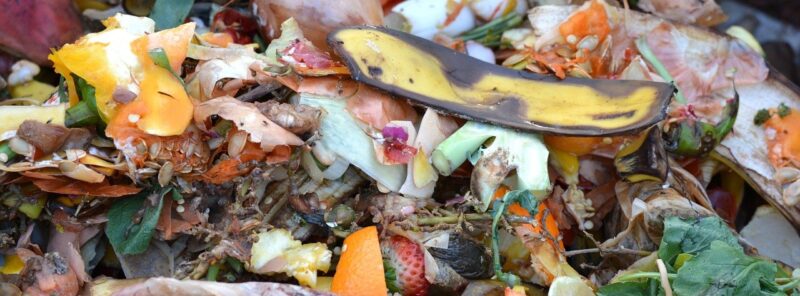
Add compost and well-aged manure to your garden to improve soil fertility. You can conduct a soil test to determine what soil amendments your garden needs.
If you don’t already have a composting system for your garden, fall is a great time to start. Pile leaves and debris from your garden clean up, then add your kitchen scraps. As long as it’s not frozen, you can turn your compost pile to aerate it and keep it working throughout the winter.
2. Mulching for Insulation
In the summer, your soil is teeming with life. The microorganisms are important for healthy soil and are still there in the winter. Mulching protects them from the elements.
Use straw, pine needles, or bark mulch to protect your plants from cool temperatures and prevent their roots from drying out or getting too wet.
3. Protective Covers and Cloths
Use store-bought protective covers or DIY frost blankets to protect your tender annuals from frost and extend your growing season as long as possible. You can also use glass cloches, window cold frames, and polytunnels.
4. Selecting Frost-Resistant Plants
Choose cold-hardy plants for your winter garden, such as kale, chard, and spinach. One way to find the best frost-resistant plants for winter gardens in your area is to plant what grows in colder climates, like Zone 2 or 3.
5. Winter Pest Management
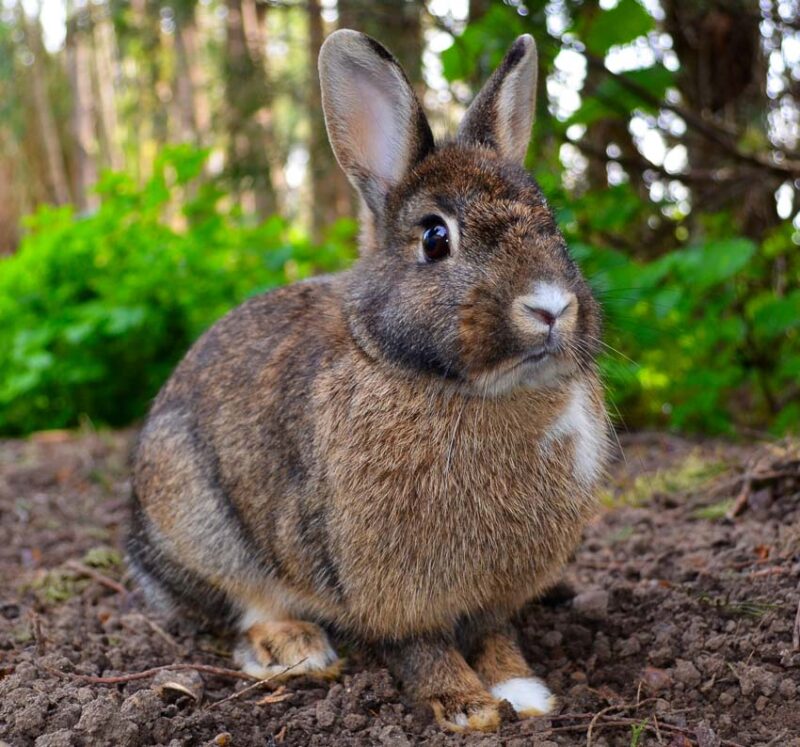
Most insects are less active in the winter, but you still have to worry about other types of pests. Deer, rabbits, and voles are some of the most annoying winter pests in the PNW. Use barriers to keep them out of your garden and protect fruit trees from girdling.
And, speaking of pests, learn how to get rid of mice and rats as well!
6. Proper Watering Techniques
You may not have to water at all in the winter in the Pacific Northwest. The region is well-known for being a wet climate, and frequent rains may be enough to keep your soil moist.
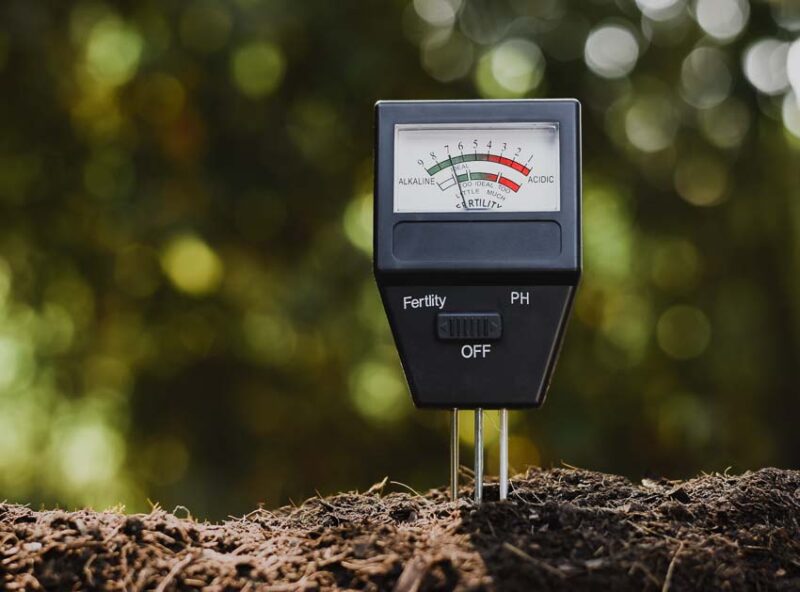
Monitor moisture levels in your winter garden and water every 2 to 4 weeks. You may need to use a soil moisture meter to check moisture levels. If you need to water, do it early in the day when temperatures are above freezing.
7. Pruning and Trimming
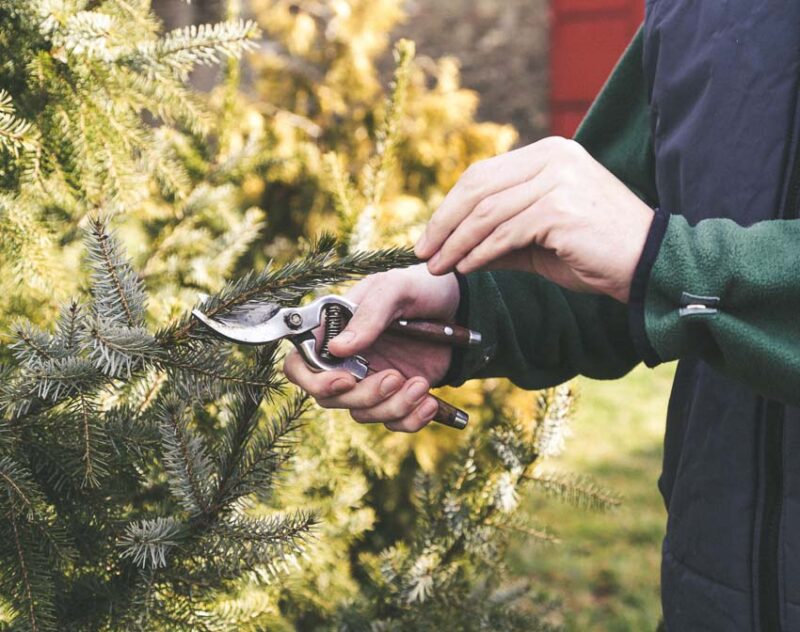
Winter is a great time to prune evergreen and deciduous trees. Apple and pear trees are easier to prune in the winter because you can see their shape better without all the leaves, and since their sap isn’t running, they heal up faster.
It’s important to note that stone fruit, like cherries and plums, should be pruned during the growing season.
8. Windbreaks and Shelter
Using windbreaks and garden walls or fences to shelter your plants is a great way to create microclimates in your garden. By protecting plants from winter winds and using thermal mass to keep them warmer, you can successfully grow plants that aren’t usually hardy in your area.
9. Monitoring Weather Conditions
Keep a close eye on weather reports to know when to use protective covers. It’s also helpful to understand how hardy your annuals are.
Generally, annuals are classified as tender, half-hardy, and hardy. Tender annuals will die when temperatures drop below freezing, but hardy annuals can survive to 20°F (7°C).
10. Winter Plant Feeding
In Zones 8 and 9, you may need to fertilize plants and trees in the winter because they are still actively growing. Use slow-release fertilizers high in potassium and phosphorus.
FAQs about Winter Gardening in the Pacific Northwest
What Vegetables Can I Grow in Winter in the Pacific Northwest?
You can grow many plants throughout the winter in the area, especially if you live in a temperate climate along the coast. Some of the most popular winter vegetables include cold-hardy vegetables like kale, broccoli, chard, beets, and carrots.
When Should I Start Winter Gardening in the Pacific Northwest?
Your winter garden should be started in the fall. The actual planting date depends on your growing zone, regional climate, and the protective measures you use, such as row covers and cold frames.
How Can I Protect My Plants from Frost in the Pacific Northwest?
Gather your supplies early and monitor the weather closely in the fall to protect your plants from frost. Cover plants with row covers, polytunnels, or old blankets when temperatures dip to keep them alive and extend your growing season.
Are There Any Winter Flowers That Thrive in Oregon?
The Pacific Northwest has a vast range of climates, so the best winter flowers for Oregon will depend on where you live, whether it’s along the coast or inland. Flowering kale, hellebores, pansies, and witch hazel are some of the most popular choices for winter color.
What Are the Best Evergreen Grasses for the Pacific Northwest?
Ornamental grasses are increasingly popular. The three main categories of ornamental grasses include warm-season, cool-season, and evergreens. The best evergreen grasses are copper sedge (Carex flagellifera), pampas grass (Cortaderia selloana), and blue oat grass (Helictotrichon sempervirens).

